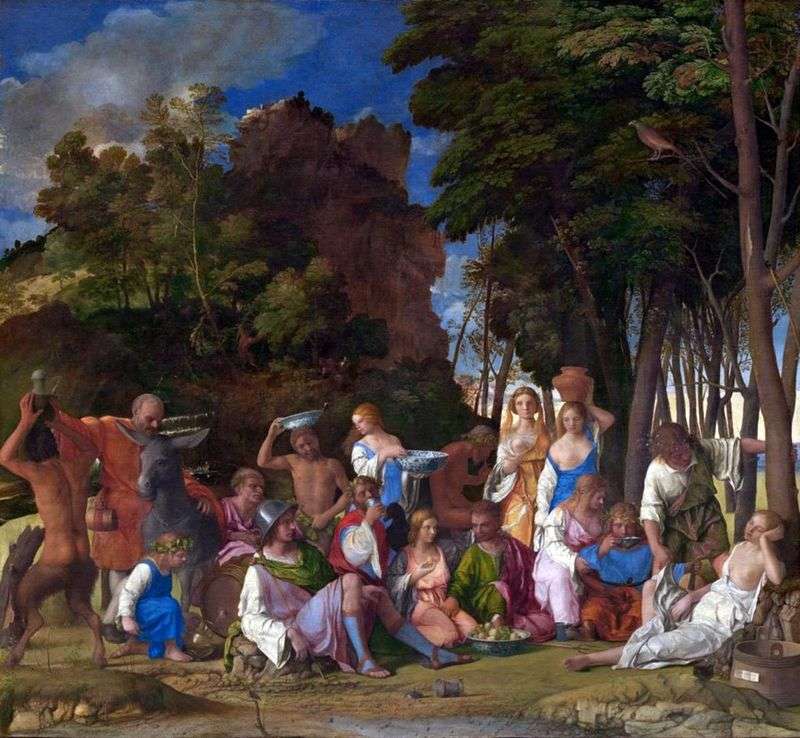
The Feast of the Gods is a painting written in oil, an Italian master of the Renaissance, Giovanni Bellini. However, Dossau Dossi and Titian are known for significant additions to the details of the landscape. This is one of the few paintings on the mythological theme of this Venetian artist. Completed in 1514, she is his last major work.
To date, the work is in the National Gallery of Art in Washington, DC. There she is considered “one of the greatest Renaissance paintings in the United States.” The painting is the first major depiction of the “Feast of the Gods” scene in the art of the Renaissance.
The picture shows the case with the attempted rape of Lothis. She was a nymph wrote Ovid, daughter of Neptune. During the festival in honor of the Liber, in which she was present, Priapa tried to rape her while she slept, but was unexpectedly awakened by an ass and fled, leaving Priapa in confusion.
In the picture there are many characters from the Greek pantheon and mythological bestiary.
Around 1598, the picture was confiscated and delivered to Rome by Cardinal Ippolito Aldobrandini as a papal legate.
The “Feast of the Gods” was exhibited in 1856, at the British Institute in London. He also traveled to Washington, visited Venice in 1990, in London and Madrid in 2003, and also in Vienna in 2006,
The picture was carefully examined in 1985, an extensive analysis of the pigment was carried out during the cleaning and the remaining work on the painting. All three artists, Bellini, Dosso and Titian used pigments available at that time, among which were: natural ultramarine, lead-tin-yellow, malachite, yar-copper and cinnabar. The feast of the gods is one of the few examples of the use of auripigment and realgar in Italian oil painting of the Renaissance.
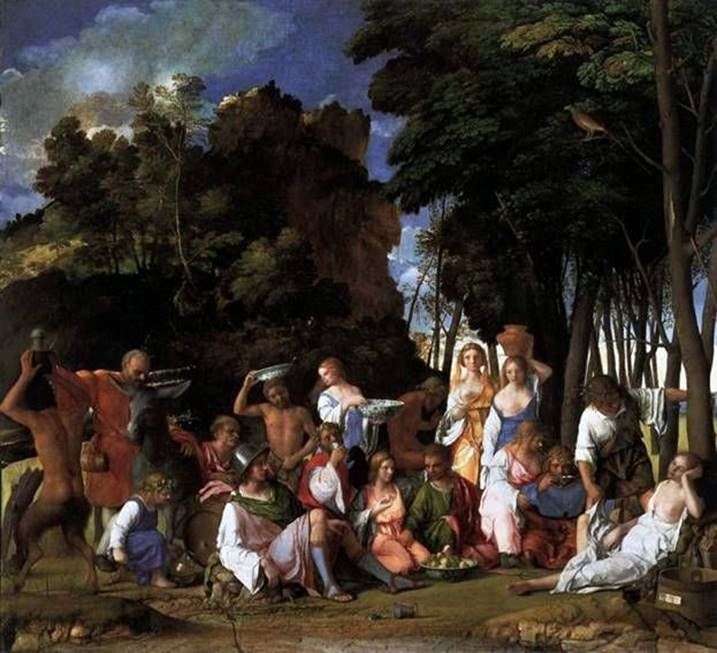 The Feast of the Gods by Giovanni Bellini
The Feast of the Gods by Giovanni Bellini The Festival of Venus (Bacchanalia of Babies) by Titian Vecellio
The Festival of Venus (Bacchanalia of Babies) by Titian Vecellio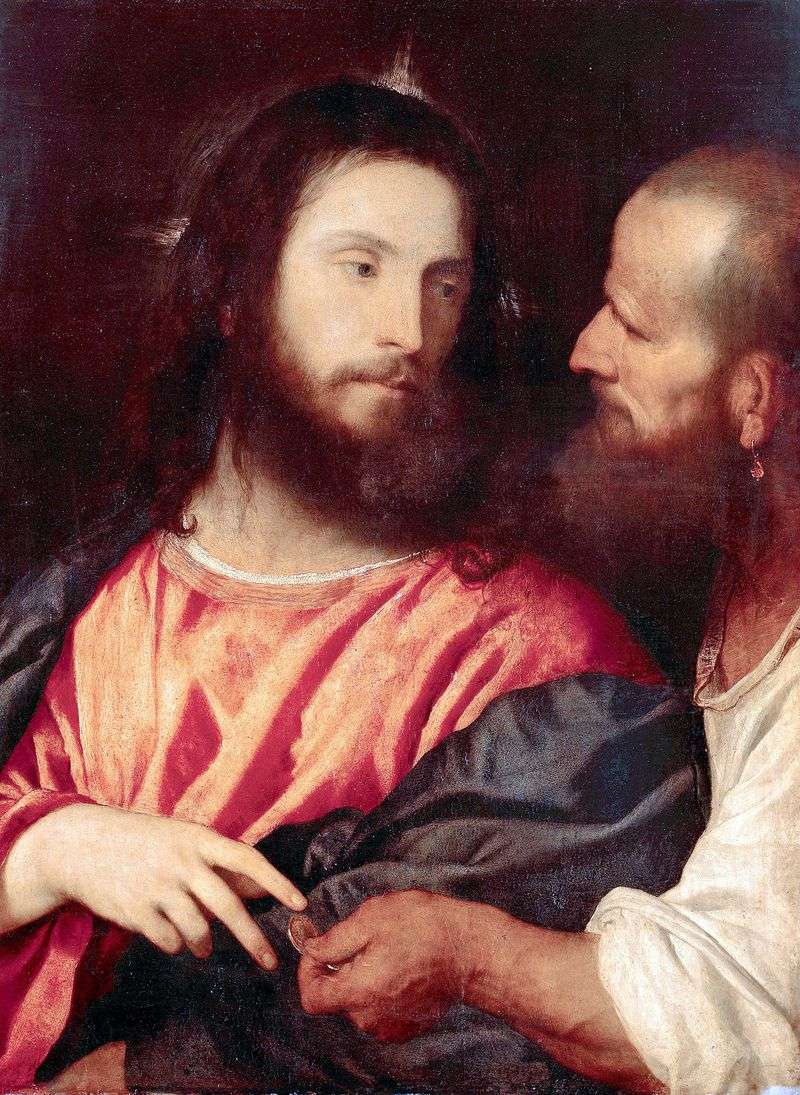 Caesar’s Dinar by Titian Vecellio
Caesar’s Dinar by Titian Vecellio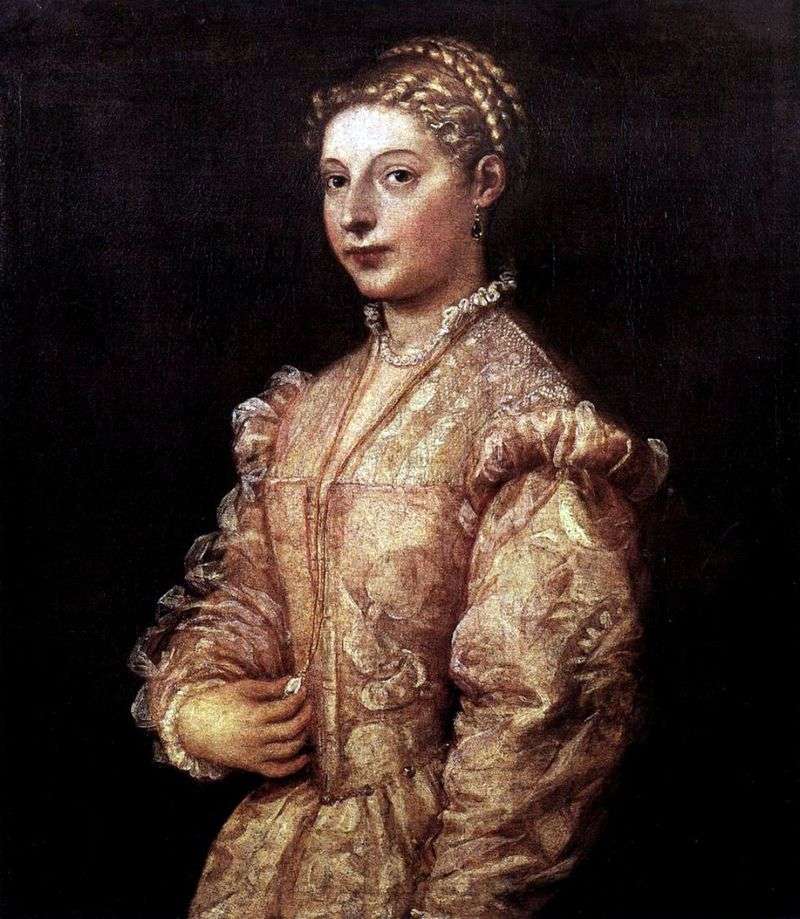 Portrait of a Girl by Titian Vecellio
Portrait of a Girl by Titian Vecellio Venus of Urbino by Titian Vecellio
Venus of Urbino by Titian Vecellio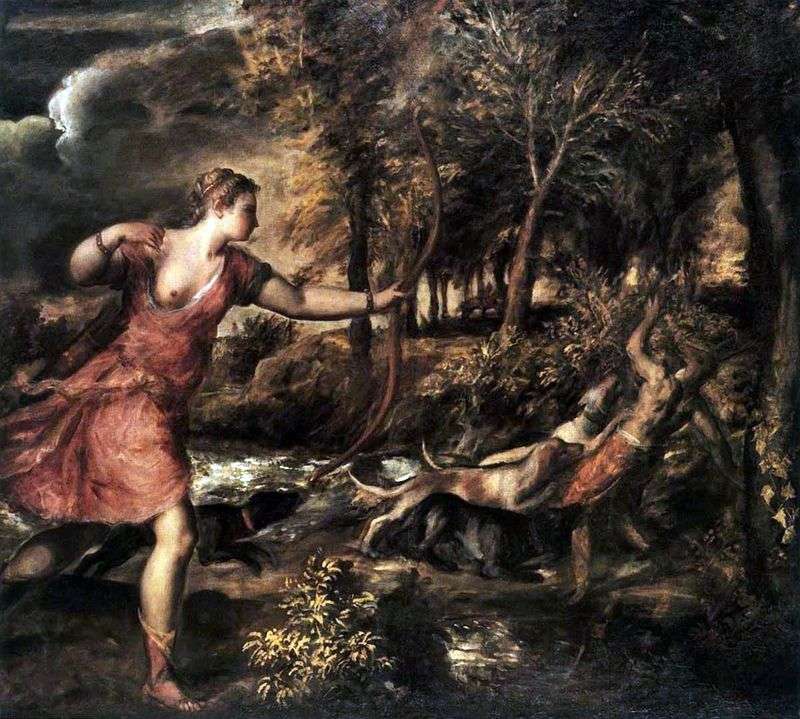 Hunting Diana by Titian Vecellio
Hunting Diana by Titian Vecellio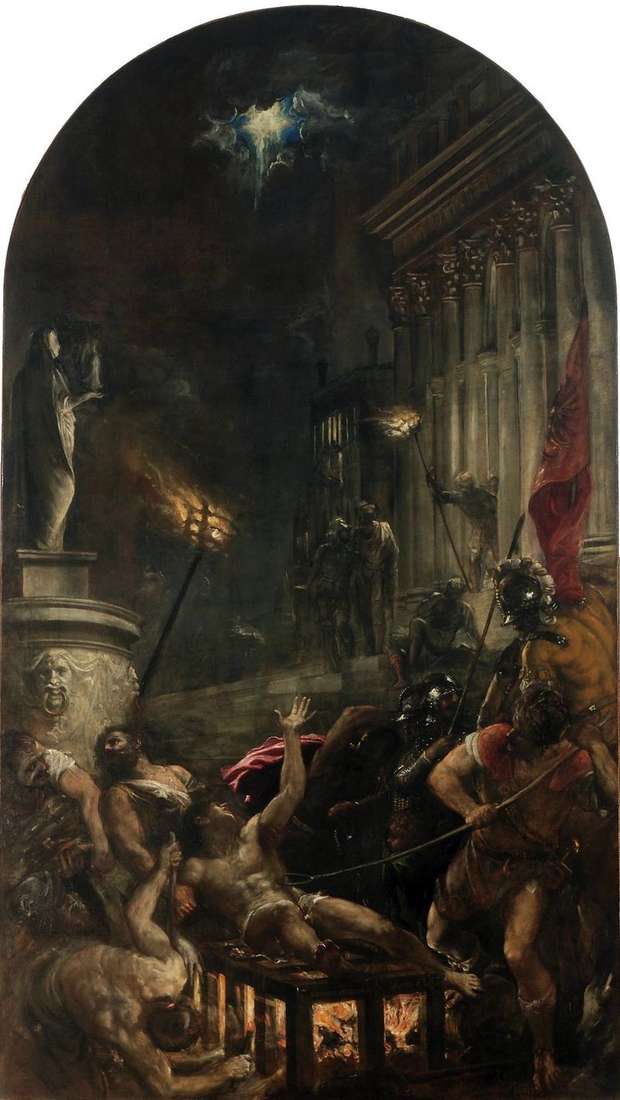 The Martyrdom of St. Lawrence by Titian Vecellio
The Martyrdom of St. Lawrence by Titian Vecellio Escape to Egypt by Titian Vecellio
Escape to Egypt by Titian Vecellio